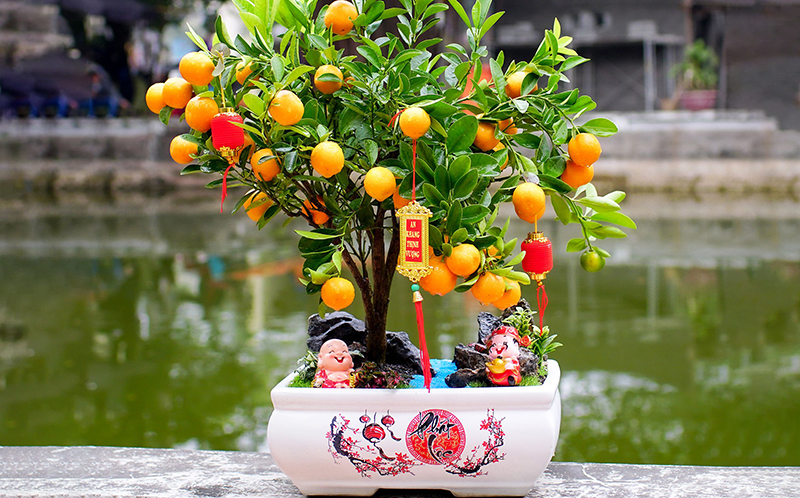In traditional East Asian medicine, the kumquat fruit is highly valued for its sweet and sour taste, its warming nature, and its ability to balance the two main meridians of the Spleen and Stomach. Kumquat is believed to strengthen digestive function, soothe tension, and facilitate phlegm transformation. It is also used to treat symptoms of coughs, colds, upper abdominal fullness, gastric pain, bloating, and discomfort resembling abdominal masses, nausea, loss of appetite, as well as postpartum abdominal pain and support the resolution of uterine retention.
– Kumquat leaves have a bitter taste and a cooling nature, affecting the Liver, Spleen, and Lung meridians. They are used to soothe and improve liver function, stimulate the digestive process, promote lung ventilation, and reduce symptoms such as vomiting, hiccup, reduce swelling of lymph nodes and tumors.
– Kumquat seeds, with their sour and spicy taste, have a neutral nature and act on the Lung and Large Intestine meridians. They are applied in the treatment of diseases related to the eyes, sore throat, orchitis, neck lymph nodes, and other disorders.
– Kumquat roots, with their sour and spicy taste and warm nature, help stimulate the activity of the Spleen and reduce stagnation. They are effective in treating gastric pain, vomiting, hiccup, abdominal distension, boils, and tumors.

In the work “Bản thảo cương mục” by Ly Thoi Tran, kumquat is described as having the ability to treat flatulence, thirst, reduce alcohol toxicity, and prevent alcohol intoxication, as well as eliminate bad odor. A recent study also revealed that kumquat jam is effective in promoting digestion, even more potent than the traditional herb sa nhân (Alpinia oxyphylla).
Here are some medicinal recipes using kumquat:
1. For colds and non-productive coughs: Take 5 kumquats and 3 slices of fresh ginger, add 15g of rock sugar and steep in water to drink.
2. Relieving bloating and indigestion: Soak 300g of washed kumquats in 600ml of white wine with an alcohol content above 40%. Increase the amount of wine accordingly if using more kumquats; soak for about 2 weeks before use. Drink 15-20ml twice a day, before meals.

3. Alleviating dry throat, toothache, limiting dry mouth, and detoxifying alcohol: Dry 500g of sliced kumquats, mix with 250g of green tea, and place in a sealed container, let it sit for 1 month. Use 50ml of the essence mixed with warm water, drink twice a day.
4. Soothing sore throat, toothache, limiting dry mouth, detoxifying alcohol: Dry 500g of sliced kumquats, mix with 250g of green tea, and put in a tightly sealed container, let it sit for 1 month. Use 50ml of the essence mixed with warm water, drink twice a day.
5. Treating constipation, bloating, and chest congestion: Steep 100g of kumquats to drink throughout the day.
6. Assisting in the treatment of gastric ulcers and colitis: Take 30g of washed kumquat roots and cut them into short sections, together with 150g of sliced pig stomach, simmer in a pot with enough water (or half water and half wine). Add appropriate seasoning to taste and use both the liquid and solid part.

7. Treating frequent urination and urinary dribbling: Steep 30g of kumquat roots and 15g of rock sugar to drink as daily tea.
8. Treating vaginal inflammation and swelling: Steep 60g of kumquat roots, 15g of dried tangerine, and 30g of licorice root (or replace with lemon peel or kumquat peel) with a little wine and drink 3 times a day.
9. Assisting in the treatment of uterine prolapse in women: Simmer 90g of kumquat roots, 30g of living TV room, and 60g of thìa lãi roots with pig stomach, using a mixture of half water and half wine. Divide into two portions and use them throughout the day.

































